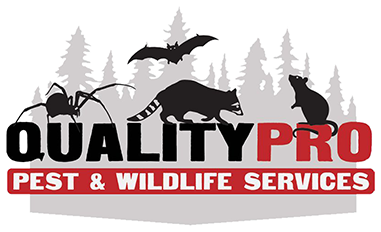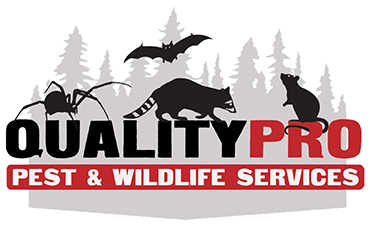
Understanding Rodent Behavior and Risks
Recognizing Signs of Rodent Infestation
Identifying a rodent infestation early can be the difference between a simple fix and a full-blown invasion. Restaurants must be vigilant, as signs of these unwelcome guests often manifest subtly. Droppings, resembling dark grains of rice, are a clear indicator of rodent activity. Gnaw marks, particularly on food packaging or wooden structures, are another red flag. Perhaps the most unnerving sign are the sounds of scurrying or scratching within walls or ceilings, especially at night when rodents are most active. Understanding these signals is crucial for restaurant owners to take timely action and protect their establishment.
Aside from visual and auditory clues, other signs include foul odors from urine or a deceased rodent, as well as greasy rub marks where rodents have repeatedly brushed against walls or baseboards. Nests made from shredded materials can sometimes be found in secluded areas, indicating a breeding population. It's not just about spotting these signs; it's about recognizing them as a call to action. Timely intervention can prevent the situation from escalating into a health hazard for both customers and staff.
Health Hazards and Contamination Concerns
When rodents invade a restaurant, they bring more than just an unpleasant presence; they carry significant health risks. These creatures are vectors for diseases such as Hantavirus, Salmonella, and Leptospirosis, which can be transmitted through their droppings, urine, or saliva. The risk of food contamination is high, as rodents have little reservation about feasting on stored ingredients, leaving behind a trail of pathogens. This not only endangers public health but can also lead to severe repercussions for a restaurant's reputation and compliance with health regulations.
Moreover, rodents can exacerbate allergies and asthma in sensitive individuals, posing an additional threat to both employees and patrons. Their nesting materials, dander, and droppings can pollute the air quality within the establishment. The importance of recognizing these health hazards cannot be overstated. By understanding the risks, restaurant owners can prioritize effective rodent control measures to safeguard their customers' health and their business's integrity.
Preventative Measures and Exclusion Techniques
Sealing Entry Points and Structural Weaknesses
To keep rodents at bay, it's essential to fortify the restaurant against their entry. Meticulous examination of the building's exterior can reveal potential access points that need sealing. Common entry points include gaps around doors and windows, unsecured vents, and openings for utility lines. Even small cracks in the foundation or roofing can provide an entryway for these persistent pests. Using materials like steel wool, caulk, or metal sheeting to seal these vulnerabilities can significantly reduce the likelihood of a rodent infestation.
It's not just about blocking current entry points; it's also about anticipating future weaknesses. Regularly inspecting the premises for signs of wear and tear that could invite rodents is crucial. This proactive approach to structural maintenance ensures that the restaurant remains a fortress against these unwelcome invaders, preserving the safety and cleanliness of the dining environment.
Implementing Sanitation and Waste Management Protocols
Sanitation is a cornerstone of rodent prevention. A clean restaurant is far less appealing to pests seeking food and shelter. Effective waste management, including regular trash disposal and secure storage practices, can deter rodents from taking up residence. Ensuring that food is stored in rodent-proof containers and that dining areas are promptly cleaned after service can eliminate the attractants that bring these pests indoors. Staff training on proper sanitation protocols is also vital, as human error can often provide opportunities for rodents to thrive.
Moreover, outdoor waste management is just as crucial. Dumpster areas should be kept clean and lids securely closed to prevent rodents from foraging. Regularly scheduled trash pickups and well-maintained waste containers can minimize the chances of a rodent infestation. By implementing and adhering to strict sanitation and waste management protocols, restaurants can significantly reduce the risk of pests and maintain a hygienic environment for their patrons.
Rodent-Proofing Through Design and Maintenance
Restaurant Layout Considerations for Minimizing Infestation Risks
When designing a restaurant, consideration should be given to minimizing areas where rodents can hide or access food. This means creating an open layout where spaces are easily accessible for cleaning and monitoring. Kitchens and storage areas should be designed with minimal clutter and ample space between equipment and walls to prevent rodents from finding refuge. Additionally, incorporating materials and finishes that resist gnawing can help deter rodents from making themselves at home in your establishment.
Strategic placement of appliances and storage units can also play a role in rodent-proofing a restaurant. By ensuring that these areas are easily visible and accessible, it becomes harder for rodents to go undetected. The goal is to create an environment that is inhospitable to pests while still functional and aesthetically pleasing for guests and staff. Thoughtful design can be a powerful tool in the fight against rodent infestations.
Regular Inspection and Maintenance Schedules
Consistency is key in preventing rodent infestations. Establishing regular inspection and maintenance schedules allows for the early detection of potential problems. This includes checking for signs of rodents, assessing the integrity of exclusion measures, and ensuring that sanitation protocols are being followed. By routinely inspecting the premises, restaurant owners can identify vulnerabilities before they are exploited by rodents. This proactive approach not only prevents infestations but also maintains the overall upkeep of the establishment.
Maintenance goes beyond inspections; it involves acting on the findings. Whether it's repairing a broken vent cover or addressing a sanitation lapse, timely responses are essential. By committing to a regular schedule of inspection and maintenance, restaurants can demonstrate their dedication to providing a clean, safe, and pest-free dining experience for their customers.
Technological and Natural Deterrents
Utilizing Ultrasonic Devices and Repellents
Ultrasonic devices and natural repellents offer a modern approach to deterring rodents without resorting to harsh chemicals. These devices emit high-frequency sounds that are intended to be uncomfortable for pests, encouraging them to seek refuge elsewhere. While the effectiveness of ultrasonic devices can vary, they can be a part of a comprehensive rodent control strategy. Natural repellents, such as essential oils like peppermint, may also discourage rodents due to their strong scent. However, it's important to note that these methods should complement, rather than replace, traditional rodent-proofing techniques.
When considering ultrasonic devices and natural repellents, it's essential to understand that their success can be influenced by the environment in which they are used. Factors such as the layout of the space, the severity of the infestation, and the type of rodent can all impact their effectiveness. Therefore, these deterrents should be used in conjunction with other preventive measures and possibly in consultation with pest control professionals to ensure the best results.
Integrating Pest Control Technology and IoT Solutions
Advancements in pest control technology have introduced innovative solutions for managing rodent infestations. Internet of Things (IoT) enabled traps and monitoring systems represent the cutting edge of this field. These smart devices can alert restaurant owners in real-time when a rodent is detected or a trap is triggered, allowing for immediate action. This level of monitoring provides a continuous line of defense against rodents, ensuring that any activity is swiftly addressed.
The integration of these technologies into a restaurant's pest management plan can significantly enhance the effectiveness of rodent control efforts. By leveraging data and automation, restaurant owners can stay one step ahead of potential infestations. These smart solutions not only improve the efficiency of pest control but also offer valuable insights into rodent behavior, helping to refine and improve prevention strategies over time.
Engaging Professional Pest Management Services
Criteria for Selecting a Pest Control Partner
Choosing the right pest control partner is a critical decision for any restaurant owner. It's important to select a service that is not only effective but also aligns with the values and needs of the business. Key criteria to consider include certifications, indicating that the company adheres to industry standards; experience, which reflects their ability to handle a variety of pest situations; and a commitment to integrated pest management approaches, which focus on long-term prevention and control rather than just short-term fixes.
Quality Pro Pest & Wildlife Services, located in Hawthorne, NY, exemplifies these qualities, offering a comprehensive approach to pest management. With a team of certified professionals and a track record of success, they are well-equipped to handle the unique challenges that restaurants face when dealing with rodents. By selecting a partner like Quality Pro, restaurant owners can have confidence in the safety and cleanliness of their establishment.
Collaborative Strategies for Long-Term Rodent Control
Working with a professional pest control service like Quality Pro Pest & Wildlife Services is not just about addressing current infestations; it's about developing a customized, ongoing management plan. Such a plan takes into account the specific needs and circumstances of the restaurant, ensuring that prevention, control, and monitoring strategies are tailored to provide the most effective defense against rodents. Collaboration between the restaurant staff and the pest control professionals is key, as it allows for a unified approach to maintaining a rodent-free environment.
Quality Pro Pest & Wildlife Services understands the importance of this partnership and works closely with restaurant owners and the surrounding areas to establish a proactive and comprehensive rodent control strategy. By engaging our expertise, restaurants can benefit from the peace of mind that comes with knowing their establishment is protected against the risks associated with rodent infestations. If you're in need of reliable and effective pest control services, don't hesitate to contact Quality Pro Pest & Wildlife Services for a consultation and take the first step towards a lasting solution for your restaurant.
Call QualityPro Pest & Wildlife Services now at (914) 877-3006 or send us a message online.

